Meet the physicist who now makes stunning furniture near Thirsk
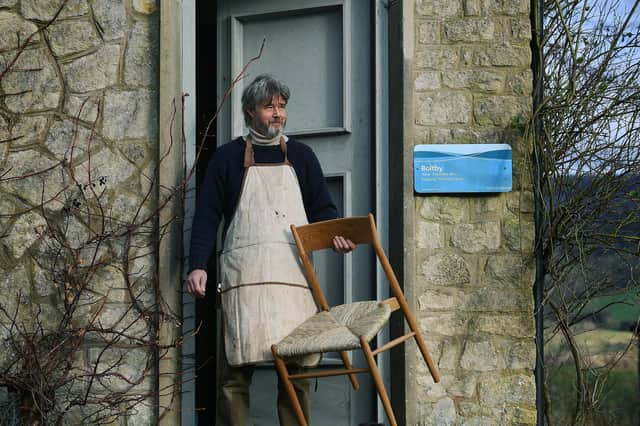

Marcus Jacka works in a valley on the picturesque cusp of the North York Moors. It wasn’t exactly a plan, but this man from Adelaide in Australia seems dustily content.
As he is self-taught, you could say Marcus dovetailed himself into this life. He is by training a physicist and came to Yorkshire aged 27 to work at the University of York. His speciality was electron microscopy. He stayed for ten years but doesn’t miss the academic world.
Advertisement
Hide AdAdvertisement
Hide Ad“The reason for that is I don’t like institutions. You either fit into an institution or you don’t,” he says.
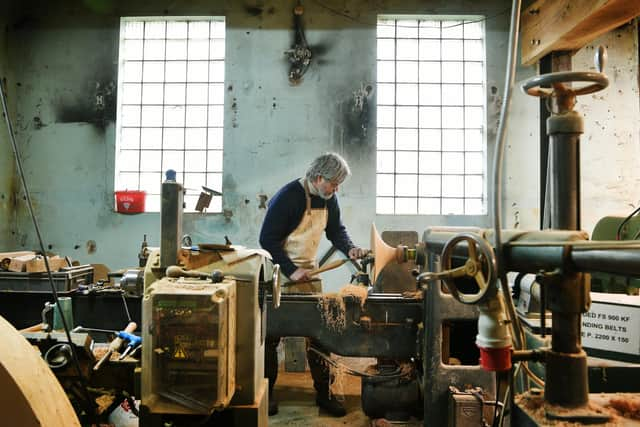

What he enjoyed most was making the instrumentation for electron microscopes, using lathes and mills and welders.
“Making stuff out of metal,” he says. “But I’m much more comfortable with wood – it’s my material.”
Now he is crafts furniture for his company Non-Standard. His pieces are contemporary but made the old way. His dining tables are found around the world, so he must be doing something right.
Advertisement
Hide AdAdvertisement
Hide AdHe works with architects, interior designers and artists on bespoke designs. Past collaborations include Waldo Works, Duncombe Park Estate, Lutyens Furniture & Lighting, York artist Mark Hearld and St Jude’s, alongside artist Jeff Koons in the US.
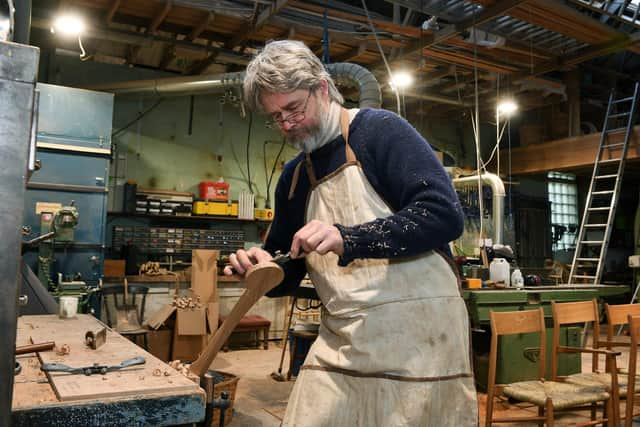

All the work happens in Boltby in a former waterworks, a voluminous space filled with tools, machines and skeleton bones waiting to be resurrected as chairs. Marcus lives in York with the writer and biographer Lisa Chaney but spends his days in this quietly busy place. Alongside him are his assistant Lawrence Dowson, a former chef, and Blaise the dog.
There is wood in the burner too, just as well as it’s a chilly day.
Marcus sits me in one of his chairs.
“It’s a reading chair, it’s not really a dining chair because it’s probably a bit low and a bit big,” he says. “It’s not a slobbing lounge chair as I imagine sitting and reading. Or talking, a talking chair.”
Advertisement
Hide AdAdvertisement
Hide Ad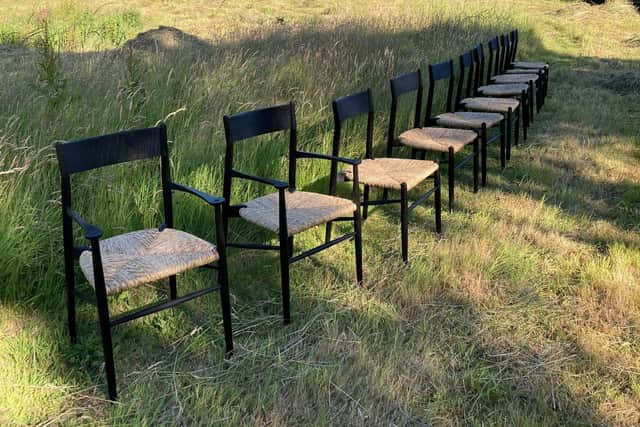

We are here to talk, so that fits, and this modernist throne of European oak is solid, supportive and super stylish.
“That particular oak grew in Croatia and was taken to what was described to me as a boutique sawmill. It’s the most expensive oak you can buy but it’s really nice, lovely to work with.
“I like European hardwoods; I like the subtlety of them. I grew up in Australia and the timbers there can be really flamboyant and beautiful,” he says.
Some woodworkers relish the natural beauty of such wood; Marcus balances the design and the material. Understated timber is what he likes, although the arms of the chair do feature eye-catching black details in bog oak.
Advertisement
Hide AdAdvertisement
Hide Ad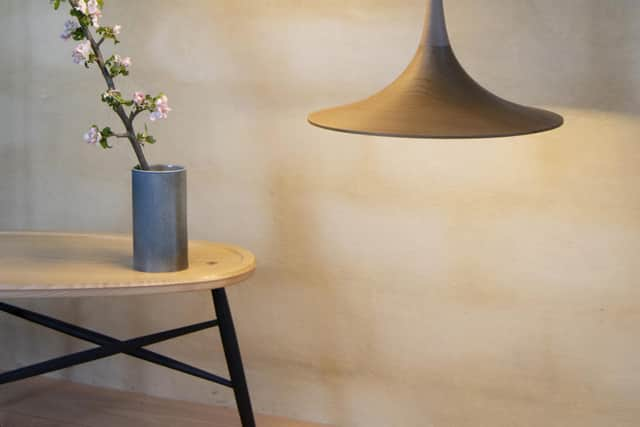

“Thousands of years ago a tree falls over and lands in the bog, and that environment is an anaerobic environment, there’s no oxygen, so it preserves it. It’s half-way towards becoming coal,” says Marcus.
Most of his wood is grown locally and cut up by the sawmill in Ampleforth. The wood has to be set aside while it is seasoned, one year for each inch of thickness. A two-inch board for a tabletop will season for at least two years.
Marcus has a story about that company name.
“I make this particular lamp that I call a flambeau, as it’s a flaming torch. They are quite tall, about five feet hall, and they shine upwards, but they are not self-supporting. It’s not a standard lamp but a non-standard lamp,” he says.
“That’s where the idea came from. If you get my furniture you’re getting something a little bit different, not off the shelf.”
Advertisement
Hide AdAdvertisement
Hide AdMarcus is 54, tall and greyly hirsute. His accent is hard to place, English with a skip of Australia. “Well, I’ve been here for a while. I’m from Adelaide, and people say the Adelaide accent is slightly more English than the rest of Australia.”
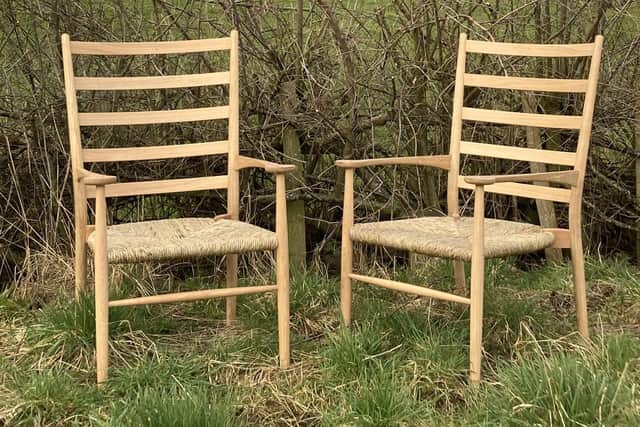

His tables are made to order as customers usually specify the size. Marcus has made a lot of tables.
“A lot of our work goes to America, so from this little valley in Yorkshire it goes all over the world,” he says. “A few years ago, we made quite a large table seating ten and that was air-freighted off, believe it or not, to Beverly Hills 90210, which I thought was quite funny.”
He had no idea who the client was, as often approaches are made by an interior designer. His commissions come via word of mouth or its modern cousin – word-of-Instagram.
Marcus says he feels pride in each finished piece.
Advertisement
Hide AdAdvertisement
Hide Ad“As a furniture maker you’re competing against the cheap mass-produced furniture, which can be quite well made and quite good, and you’re also competing against the second-hand market,” he says. “There’s a lot of beautiful old furniture you can buy for frankly not very much. So, it’s quite a niche thing to make handmade furniture.”
Marcus has settled into this life of wood.
“It suits me. I’m my own boss and I’m naturally a reflective person and there’s space and time for contemplation, and really thinking about the work,” he says.
“It’s the one thing in my life that I’m quite obsessive about. I don’t think I am naturally obsessive as a person. But when it comes to my work, I can stare at a bit of a chair for hours. And there’s no way someone’s going to employ me on a salary to do that.”
Marcus stays away from computers. Instead, he draws by hand, then makes a model. He holds up a perfect little chair for a set he is about to make. “It’s a good scale, five-to-one. It really helps me to see it in the round.”
Does he like touching what he has made?
Advertisement
Hide AdAdvertisement
Hide Ad“I do, I do, yeah. I just love the material; I love the wood. One of the things about wood is the look, is the feel but it’s also the smell. It’s a very sensory experience being a woodworker.”
Finished in the workshop is a set of chairs with rush seats made by basket weaver John Taylor from Ulleskelf near Tadcaster, who is in his 80s.
Much of the work here is done by hand but machines are used, including a 30-year-old sander about half the size of a car.
What’s better: hand or machine? Marcus points to a distinction made a long time ago by David Pye, a former professor of furniture at the Royal College of Art.
Advertisement
Hide AdAdvertisement
Hide Ad“He had this notion of the craftsmanship of risk and the craftsmanship of certainty. In a way it doesn’t matter if you use a machine or your hands, it’s what behind that. If you use a machine but there’s still risk, you still have to guide that machine, there that’s very different from something programmed.”
The parts for chairs are made beforehand. In the workshop are rib-like wooden slats, hoops and parts blackened using a Japanese technique.
“The reason I do that is a brings out the texture as much as the colour,” Marcus says.
A delicate-seeming effect produced with unsubtle flames from a gas blowtorch.
More details at non-standard.co.uk. Non-Standard will be open as part of North Yorkshire Open Studios on June 1-2 and June 8-9, details on nyos.org.uk